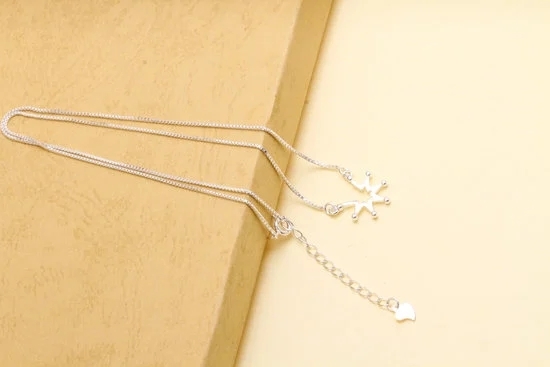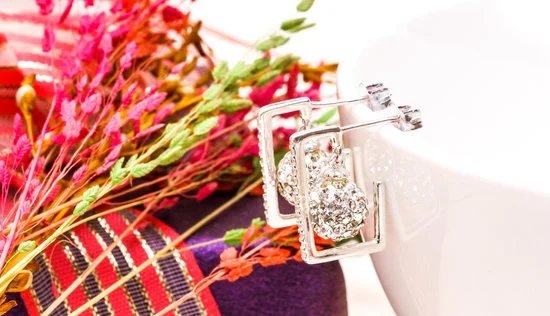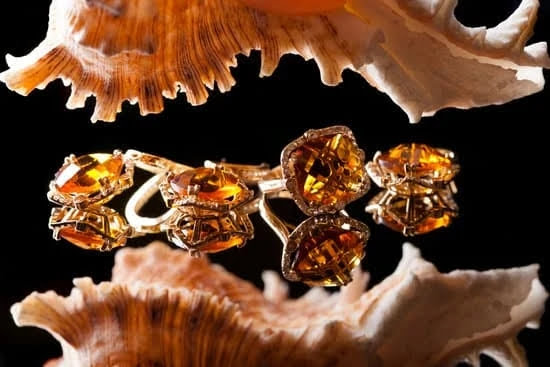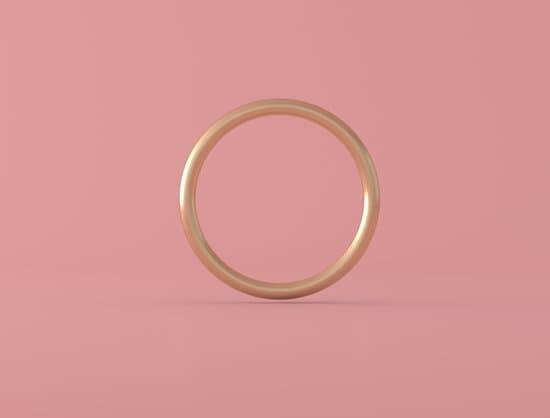Introduction
For centuries, silver has been used to make jewelry. Silver is a naturally occurring metal that has a long and storied history as an effective material for creating stunning pieces of adornment. Its soft and malleable nature allows it to be easily worked into complicated patterns and designs, while its reflective properties make Pendant necklaces with shimmering silver pendants, rings adorned with intricate filigree details, and elaborate bracelets featuring knotted inlay are just a few examples of how artisans have used the precious metal to craft magnificent pieces of jewelry.
The use of silver for jewelry production dates back as far as 4500 B.C. when it was first discovered in Anatolia (now modern-day Turkey). Archaeological sites across the Mediterranean have revealed evidence of this metal being used to make both decorative boxes and jewelry, one example being a ‘votive necklace’ found at the Palace of Nestor in Pylos which dates back to around 1000 B.C., showing just how advanced its applications were even then! By the Iron Age (1200-800 B.C.) demand for luxury goods increased tenfold, including silver jewelry which could only be afforded by those in higher social positions. Artifacts from this period are particularly well preserved due to their often-pristine condition under stable climatic conditions, providing researchers with insight into the sophistication of design during these ancient times. Moving through history, we see silver being adopted in various forms across cultures; imitations of Etruscan cuffs were seen created in Greek culture while Egyptian pieces often featured stylized figures set against bright backgrounds filled with motifs such as gods or animals. Indeed, the popularity of silver shows no signs of waning over time – nomadic cultures utilized beads made out of sheet silver marked by stamps all over Europe and Russia up until fairly recently (by comparison)!
Different Forms & Purities of Silver Used in Jewelry Making
Silver is a popular choice for use in jewelry making due to its malleability, affordability and beauty. It is used to craft both contemporary and traditional designs around the world and comes in many forms with different levels of purity.
Pure silver is known as fine silver and can be soft to work with but tarnishes quickly, so it is often alloyed with another metal such as copper for strength and durability. Sterling silver is the most common form found in jewelry and contains 92.5% pure silver combined with 7.5% copper, zinc or other alloys for strength. Argentium sterling silver goes one step further because it has germanium added to it, meaning that it rarely tarnishes, making it easy to care for without compromising on style. Silver-filled sheet or wire also contain sterling silver however they feature layers of sterling silver bonded to a brass core which makes a budget friendly option that still offers beauty and longevity.
Finally, silver plate offers an economical way of obtaining jewelry with this precious metal look. Silver plate has a thin layer of silver applied over another metal such as brass or nickel giving cheaper pieces the coveted shimmer of genuine silver jewelry at a much lower price point. Nevertheless whatever form you choose the right care and maintenance should be taken into consideration in order keep your pieces looking beautiful far longer than usual.
Properties of Silver Jewelry and Their Unique Benefits
Silver is a popular choice for making jewelry due to its beauty, malleability and affordability. Silver has a lustrous white color with a subtle grey tint when exposed to the light. It is one of the softer metals, making it ideal for producing beautiful designs as well as intricate details that would be impossible with harder metals like gold or platinum. Silver also has antimicrobial properties, meaning jewelry made from silver can reduce bacterial growth, helping to protect the wearer from potential infections. Silver also naturally resists tarnishing and corrosion due to its low oxidation rate, making it more durable than other precious metals such as bronze and copper and so more likely to last longer over time. Aesthetic-wise, silver jewelry is a great way to add subtle yet stylish touches of elegance and luxury to an otherwise plain look. It can be used in combination with bolder colors or simply as bright accents on their own. This makes them incredibly versatile statement pieces that are sure to become timeless classics in any wardrobe!
Popular Jewelry Styles, Designs, and Techniques Created with Silver
Silver has been used in jewelry for centuries and makes a great choice for many types of adornments. From earrings, necklaces, bracelets, and rings to brooches and pendants, silver jewelry ranges from delicate designs to bold, intricate pieces. Here are some popular styles, designs, and techniques created with silver:
• Filigree Jewelry- Delicate lace-like patterns are often found in filigree jewelry made from silver wires or thin strips of the metal woven together or twirled into intricate tendrils. Commonly seen items include earrings, necklaces, pins and other small decorations.
• Repousse Jewelry- Silver sheets are raised using tools like hammers and punches to create low relief images and patterns over the surface of the material. This technique has been used since ancient times by skilled craftsmen to create unique pieces of art on plates and medallions.
• Engraving- Silver can be manually etched with acid or machinery with high-powered lasers to produce finely detailed image or lettering such as monograms, messages, dates or names that can serve as a lasting legacy on a piece of jewelry.
• Casting – Silversmiths pour molten silver into molds that can range from simple stone castings to extremely complex multi-part ensembles which make up an entire piece of jewelry when connected into an elaborate composition displaying significant detail or broad patterned components.
• Setting – Semi precious gems such as diamonds or pearls are set in silver among the most common methods used is called bezel setting; where a fine edge secures the gemstone within its frame in order to protect it from damage. Some traditional claw settings hold the stones securely with tiny curved claws formed out of thin strips of silver that wrap around each individual faceted stone ensuring extra security while creating an aesthetically pleasing effect.
Essential Tools & Supplies Necessary for Jewelry Making with Silver
Making jewelry with silver requires a few essential tools and supplies. Mostly, the required items are metal cutting or filing tools (such as a saw, pliers, files and wire cutters), metal stamping set, solder and flux for joining components together, soldering torch for heating the metal pieces and polishing consumables (like polishing compound). Other supplies you may need are a pickle pot to cleanse your metal after soldering, sandpaper for smoothing rough surfaces of the silver pieces, mallets for forming or flattening the silver parts and lastly, beading or specifically designed silver findings to finish the piece. Additionally, it is useful to have safety glasses to protect your eyes during any jewelry-making process that involves grinding or hammering on metals.
Techniques for Working with Silver Jewelry and Safety Practices
When working with silver jewelry, it is important to use the right tools and take careful safety measures. First, make sure to wear protective eyewear and gloves while working. Use appropriate tools like saw frames, jeweler’s scissors, hand files and an engraving tool to shape the silver into the desired design. Using a soldering iron equipped with a safety shield can help ensure that no harm comes from the heat of the soldering process. Different dyes such as liver of sulfur or patinas can be used to darken or color the silver for a more decorative look. Finally, sandpaper in both medium and fine grades should be used for polishing the jewelry piece after construction is complete. With these techniques, you’ll be able to create beautiful pieces of art with your silver jewelry!
Finishing Touches & Creative Ways to Embellish Silver Jewelry
Silver jewelry is incredibly versatile and malleable, making it a great choice of material when creating jewelry. Finishing touches to silver jewelry can be done in many ways, depending on the desired look. Some popular embellishments include painting or staining silver pieces with colors like red, blue, yellow, and green. Texturing techniques like hammering imprints onto melting surfaces create interesting patterns on the silver surface. Alternatively, carving designs onto a piece enhances texture and provides visual interest. Additionally, applique-like adornments made from enamel or clay can be used to customize the finished piece; these components add a dynamic element without detracting from the base design. Applying glazes or enamels over the entire surface of a piece further adds dimension to the work and can be used to achieve an array of colors as well as a protective layer from scratches. Finally, prior to completion pieces may also be antiqued with an oxidizing compound to darken the metal and create an aged effect. With such a range of options available for finishing touches, it’s easy to see why artists are increasingly incorporating silver into their creations.
Conclusion
The timeless appeal of silver in jewelry making and design is undeniable. From its ability to oxidize and build a patina over time, its durability and affordability, there’s no denying the beauty of silver compared to other metals. Whether you are making a unique piece for yourself or creating a custom design on behalf of a customer, working with silver can be both rewarding and challenging. With its versatility and eye-catching appeal, it is easy to understand why many professional jewelers choose silver as their material of choice when crafting jewelry pieces. Regardless of what piece you’re creating, chances are that with the proper care and time, it will become something durable that you or your customers can enjoy for years to come.

Welcome to my jewelry blog! My name is Sarah and I am the owner of this blog.
I love making jewelry and sharing my creations with others.
So whether you’re someone who loves wearing jewelry yourself or simply enjoys learning about it, be sure to check out my blog for insightful posts on everything related to this exciting topic!





